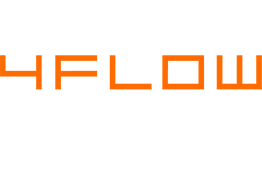SAP Data Governance
Filter By
Browse By
- SAP Analytics and AI
- SAP Application Development and Integration
- All SAP Application Development and Integration
- SAP ABAP
- SAP ABAP Development Tools
- SAP ABAP Test Cockpit
- SAP API Management
- SAP BAPI
- SAP Basis
- SAP BRF
- SAP Business Application Studio
- SAP CMS
- SAP Design Studio
- SAP Development Tools
- SAP DevOps
- SAP EAI
- SAP EDI
- SAP Extension Suite
- SAP Fiori
- SAP Fiori Elements
- SAP Integration Suite
- SAP Low Code Application Development
- SAP Low Code Automation
- SAP Netweaver
- SAP Release Management
- SAP UI5
- SAP Web Application Server
- SAP Web IDE
- SAP Business Process Management
- SAP Center of Excellence
- SAP CIO
- SAP Customer Experience
- SAP Data and Data Management
- All SAP Data and Data Management
- SAP BW
- SAP BW/4HANA
- SAP Crystal Reporting
- SAP Data Archiving
- SAP Data Center
- SAP Data Governance
- SAP Data Integration
- SAP Data Migration
- SAP Data Quality
- SAP Data Services
- SAP Data Strategy
- SAP Data Visualization
- SAP Data Warehouse Cloud
- SAP DMS
- SAP Document Control
- SAP EIM
- SAP ETL
- SAP ETL Tools
- SAP HANA
- SAP HANA Administration
- SAP HANA Deployment Infrastructure
- SAP HANA Studio
- SAP Master Data
- SAP Master Data Governance
- SAP MDM
- SAP Enterprise Architect
- SAP Enterprise Asset Management
- SAP ERP
- SAP Finance
- All SAP Finance
- SAP Accounting
- SAP AR AP
- SAP Asset Accounting
- SAP Billing Systems
- SAP BPC
- SAP BRIM
- SAP Cash Management
- SAP Central Finance
- SAP Controlling
- SAP COPA
- SAP Cost Center Accounting
- SAP e-invoicing
- SAP FICO
- SAP Finance Automation
- SAP Financial Closing Cockpit
- SAP Financial Consolidation
- SAP Financial Planning
- SAP FX Risk
- SAP General Ledger
- SAP Global Tax Management
- SAP Hyperion
- SAP Order to Cash
- SAP Payment Processing
- SAP Profitability Analysis
- SAP Rebate Management
- SAP S/4HANA Finance
- SAP Universal Journal
- SAP Governance Risk and Compliance
- SAP Human Capital Management
- SAP Intelligent Technologies
- SAP Platform and Technology
- All SAP Platform and Technology
- SAP Business Technology Platform
- SAP Cloud Connector
- SAP Cloud Integration Platform
- SAP Cloud Migration
- SAP Cloud Platform
- SAP Cloud Providers
- SAP Cloud Strategy
- SAP Container Platform
- SAP Digital Asset Management
- SAP Digital Integration Hub
- SAP Digital Signature
- SAP HANA Enterprise Cloud
- SAP HEC
- SAP Hyperscalers
- SAP Infrastructure
- SAP Messaging
- SAP Smart Forms
- SAP Quality and Testing
- SAP Security
- SAP Spend Management
- SAP Supply Chain Management
- All SAP Supply Chain Management
- SAP APO
- SAP Asset Management
- SAP Business Network
- SAP Digital Manufacturing Cloud
- SAP Digital Twin
- SAP EWM
- SAP IBP
- SAP Inventory Management
- SAP Label Printing
- SAP Logistics
- SAP Manufacturing
- SAP Manufacturing Automation
- SAP MES
- SAP MII
- SAP MM
- SAP MRO
- SAP MRP
- SAP Order Management
- SAP Plant Maintenance
- SAP PLM
- SAP Production Planning
- SAP S&OP
- SAP SD
- SAP SPM
- SAP Supply Chain Planning
- SAP Track and Trace
- SAP Transportation Management
- SAP System Administration
Data Governance: An Overview and Key Considerations
What Is Data Governance?
SAP data can deliver innovation, drive user experience, and provide competitive advantage. The process of marrying SAP data with non-SAP data from different systems — from Internet of Things devices to the back office to an organization’s web systems — is defining data culture around the world.
Simply combining data, however, is not enough. Proper management is essential to realizing its value.
Data governance is considered a core component of an effective data management strategy. Data governance can ensure that data is consistent, accurate, and protected.
The Data Governance Institute (DGI) defines data governance as “a system of decision rights and accountabilities for information-related processes, executed according to agreed-upon models which describe who can take what actions with what information, and when, under what circumstances, using what methods.” (Read the DGI’s 10 rules of engagement.)
Data Governance: An Overview and Key Considerations
What Is Data Governance?
SAP data can deliver innovation, drive user experience, and provide competitive advantage. The process of marrying SAP data with non-SAP data from different systems — from Internet of Things devices to the back office to an organization’s web systems — is defining data culture around the world.
Simply combining data, however, is not enough. Proper management is essential to realizing its value.
Data governance is considered a core component of an effective data management strategy. Data governance can ensure that data is consistent, accurate, and protected.
The Data Governance Institute (DGI) defines data governance as “a system of decision rights and accountabilities for information-related processes, executed according to agreed-upon models which describe who can take what actions with what information, and when, under what circumstances, using what methods.” (Read the DGI’s 10 rules of engagement.)
Key Considerations for SAPinsiders
The following steps can help you implement effective data governance:
- Create a strong business case for data governance. According to SAP partner Winshuttle, you need to be able to clearly communicate the value of your data to gain support from leadership. Winshuttle’s Winshuttle Foundation and Winshuttle Studio offer data management capabilities. According to the vendor, your data should be maintained through a data governance program that can ensure data quality and proper management, while complying with regulations to keep the data safe and effective.
- Increase revenue potential with a strong data governance foundation. Consider the approach of Breakthru Beverage Group. On a mission to become a fully integrated, data-driven business, the company first built a foundation with its data governance program. The initiative to cleanse and conform its material, vendor, and customer data was supported by SAP partner Protiviti, and resulted in a scorecard on data cleanliness as well as a downstream benefit: revenue generation, by enabling the business to more quickly activate products and more accurately report on them. Read the full data story.
- Set the stage for standardization and automation capabilities. In 2016, we wrote about Keurig Green Mountain’s approach to data governance. In response to meteoric growth and a growing love of the single-cup brew, the company undertook an ambitious data governance project. It transitioned from a data maintenance to a data governance organization. At the time, Keurig’s Director of Master Data Management Business Process Eileen Hanafin said its data governance initiative set the company up for future standardization and automation capabilities with a focus on continuous improvement.
895 results
-

 Premium
Premium
Pinpoint the Cause of Data Inconsistencies to Ensure Precise Key Figure and Characteristic Values
Reading time: 16 mins
Although many people view troubleshooting as a random process, you can apply a systematic technique to verify data quality. Use these helpful suggestions to locate errors. Key Concept During the final phase of BW projects, developers verify data quality. Here, quality refers to consistency and preciseness of the key figure and characteristic values that BEx...…
-

 Premium
Premium
Use Data Federator for Relational Universes on Top of SAP NetWeaver BW
Reading time: 17 mins
Find out how to install and configure SAP BusinessObjects Data Federator with SAP NetWeaver Business Warehouse (SAP NetWeaver BW). Then discover how to create relational universes based on your SAP NetWeaver BW InfoProviders, such as an InfoCube. Key Concept With SAP BusinessObjects Data Federator XI 3.1, you can create a relational universe based on your...…
-

Role of Data Quality in Supply Chain Digital Transformation
Reading time: 7 mins
Quality Data Lays the Foundation As supply chains become increasingly complex, so does the associated data landscape. Millions of data points must be managed in modern supply chains today due to the wide gamut of systems used. From Enterprise resource planning (ERP) systems that manage an organization’s basic processes to customer relationship process (CRM) systems...…
-
-

The Informatica Guide to SAP Modernization
Reading time: 6 mins
As companies begin to move to SAP S/4HANA, there are a litany of considerations they must make throughout the process. One of the most important considerations is in regard to data. Data management is a vital aspect of the move to SAP S/4HANA. It is important that users take a data-centric approach to this change,…
-

 Premium
Premium
Leveraging SAP HANA to Enhance SAP Business Planning and Consolidation’s Capabilities
Reading time: 25 mins
SAP Business Planning and Consolidation (BPC) 10.1, along with its host environments (SAP Business Warehouse [SAP BW] and SAP HANA) provide abundant design choices to meet today’s business planning needs. See a comparison between the various models available in BPC to facilitate appropriate model selection based on business priorities. The potential to enhance BPC capabilities...…
-

- SAP Process Design
 Premium
Premium
Data Mining with the Analysis Process Designer in SAP BW 3.5
Reading time: 9 mins
The Analysis Process Designer (APD) workbench, introduced in BW 3.1 Content (BW 3.0B SP6), allows users to combine numerous transformations into a single data flow. It offers a less technical approach to enhancing subject-oriented, non-volatile data that has already been integrated, cleansed, and transformed in the data warehouse. The author examines current APD features and...…
-

- SAP EIM
 Premium
Premium
Data Management Tools in SAP EIM Portfolio: Part 1
Reading time: 6 mins
SAP Enterprise Information Management (EIM) solutions are designed to revolutionize the way organizations manage their data. SAP Enterprise Information Management portfolio is a comprehensive suite of solutions designed to help organizations effectively manage and leverage their data assets. It includes various data management tools and technologies that address the key aspects of information management, including…
-
-

Turn Any-Sized Data Volume into Business Value: Discover the Power of SAP Data Warehouse Cloud
Reading time: 13 mins
Data volumes today are growing exponentially due to the various ways that data is being produced. SAP customers are being inundated with information as more and more data is arriving into hybrid environments of on-premise and cloud systems from various ERP solutions, data lakes, customer feedback via mobile apps, and social media interactions, to name…
-

 Premium
Premium
Performance Tuning Strategies to Optimize Your SAP Data Services Environment
Reading time: 13 mins
Step beyond traditional database tuning concepts, such as indexing and partitioning, and get expert tips to move toward a parallel approach for code design and job construction. Examine parallel execution within SAP Data Services to see how it distributes operations and uses the strengths across your system. Get expert advice on leveraging the pushdown capabilities...…
-

Data Integrity and Transformation Go Hand in Hand
Reading time: 6 mins
Technological innovation enables digital transformation. In his Enterprise Data and Analytics report, SAPinsider’s Kumar Singh explains that the commoditization of technology continuously lowers barriers to entry across industries, enabling smaller, nimble, and agile companies to disrupt larger and more established businesses. The report surveyed 291 members of the SAPinsider community. The purpose of the survey…
Featured Insiders
-

Vijay Garg
Chief Architect, The Principal Consulting Inc.
-

Damien Johnson
Global Chief Architect - RISE Ecosystems, SAP
-

Shashank Paritala
Avvale
Become a Member
Unlimited access to thousands of resources for SAP-specific expertise that can only be found here.
Become a Partner
Access exclusive SAP insights, expert marketing strategies, and high-value services including research reports, webinars, and buyers' guides, all designed to boost your campaign ROI by up to 50% within the SAP ecosystem.
Upcoming Events
Related Vendors
Your request has been successfully sent


